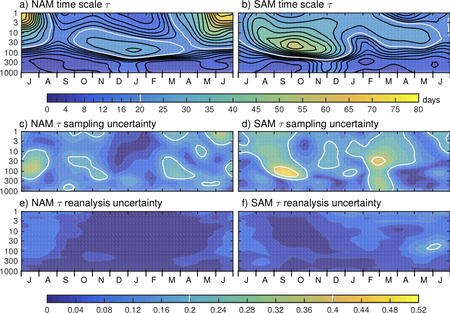What limits our ability to characterize the variability of the large scale circulation of the extratropics?
Atmospheric reanalyses provide observationally constrained estimates of the past evolution of our atmosphere. In particular, they provide a reference of comparison for climate prediction models. The ability to capture the historical evolution of the atmosphere is an important step in determining whether a model is fit for projecting future climate changes.
In a recent study, CAOS researchers and collaborators at the University of Tokyo explored how well the dominant modes of atmospheric variability in the extratropics can be constrained with atmospheric reanalyses. The paper, Quantifying the variability of the annular modes: Reanalysis uncertainty vs. sampling uncertainty, was just accepted for publication in Atmospheric Chemistry and Physics.
Atmospheric reanalyses are constructed by assimilating (or filtering) available observations into an atmospheric model, providing a homogeneous estimate of the atmospheric state as a function of time. The spread between the representation of the annular mode in different reanalysis products thus provides a rough estimate of how well we can constrain the large scale variability of the extratropics with available observations. This “reanalysis uncertainty” was contrasted with “sampling uncertainty,” that is, limitations imposed by the finite length of the reanalysis records and the large natural variability of the atmosphere. They found that in general, the spread between reanalyses is much less than the sampling uncertainty associated with the finite length of reanalysis records. This suggests we are starved for data, not physics, when it comes to characterizing the circulation of the atmosphere!



